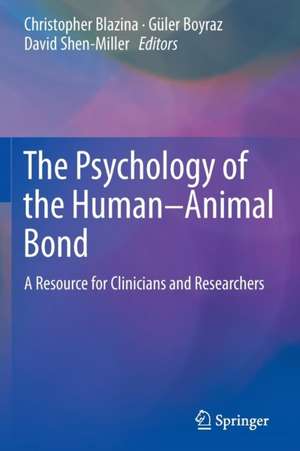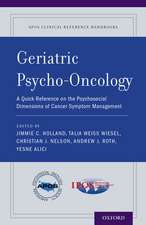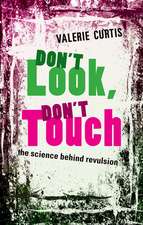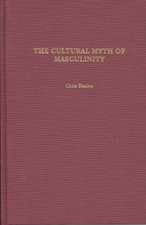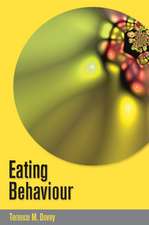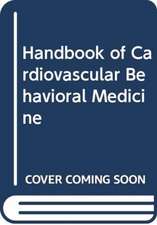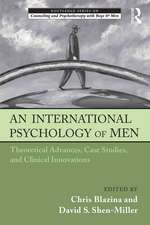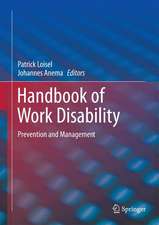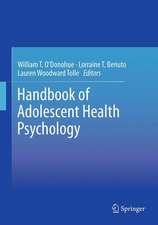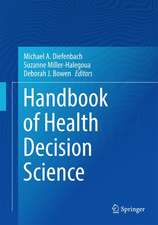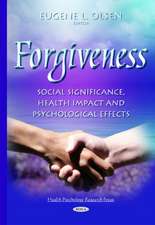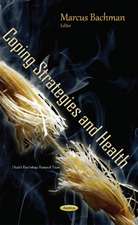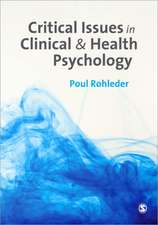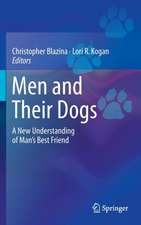The Psychology of the Human-Animal Bond: A Resource for Clinicians and Researchers
Editat de Christopher Blazina, Güler Boyraz, David Shen-Milleren Limba Engleză Paperback – 13 noi 2012
| Toate formatele și edițiile | Preț | Express |
|---|---|---|
| Paperback (1) | 913.03 lei 6-8 săpt. | |
| Springer – 13 noi 2012 | 913.03 lei 6-8 săpt. | |
| Hardback (1) | 1614.15 lei 6-8 săpt. | |
| Springer – 29 iun 2011 | 1614.15 lei 6-8 săpt. |
Preț: 913.03 lei
Preț vechi: 961.09 lei
-5% Nou
Puncte Express: 1370
Preț estimativ în valută:
174.70€ • 182.42$ • 144.27£
174.70€ • 182.42$ • 144.27£
Carte tipărită la comandă
Livrare economică 15-29 aprilie
Preluare comenzi: 021 569.72.76
Specificații
ISBN-13: 9781461461968
ISBN-10: 1461461960
Pagini: 400
Ilustrații: XXII, 421 p.
Dimensiuni: 155 x 235 x 30 mm
Greutate: 0.62 kg
Ediția:2011
Editura: Springer
Colecția Springer
Locul publicării:New York, NY, United States
ISBN-10: 1461461960
Pagini: 400
Ilustrații: XXII, 421 p.
Dimensiuni: 155 x 235 x 30 mm
Greutate: 0.62 kg
Ediția:2011
Editura: Springer
Colecția Springer
Locul publicării:New York, NY, United States
Public țintă
Professional/practitionerCuprins
Introduction: Using Context to Inform Clinical Practice and Research.- PART I: Contextual and Cultural Issues.- Chapter 1. British Animal Behavior Studies in the Twentieth Century: Interdisciplinary Perspectives.- Chapter 2. History of Animal Ethics in Western Culture.- Chapter 3. Ecosystemic and Cultural Impacts of Animal Introduction into Human Society in North America.- Chapter 4. Predator/Prey Relationships: What Humans Can Learn from Horses About Being Whole.- Chapter 5. Lap-Dogs and Moral Shepherd's Dogs: Canine and Paid Female Companions in Nineteenth Century English Literature.- PART II: Psychological Issues of Attachment.- Chapter 6. Self Psychology and the Human-Animal Bond: An Overview.- Chapter 7. Attachment Between Man and Animal: What Does It Mean?.- Chapter 8. A Developmental Psychological Perspective on the Human-Animal Bond.- Chapter 9. Understanding the AAT Rx: Applications of AAI in Clinical Practice .- Chapter 10. Attachment Style and Grief: An Internal Working Model Guiding Reactions to the Loss of a Pet Companion.- PART III: Positive Sway on Psychological Well-Being and Recovery from Illness.- Chapter 11. How Family Pets Keep Us Happier and Healthier: An Attachment Perspective on the Human-Animal Bond.- Chapter 12. Pet Ownership and Health.- PART IV: Bereavement, Loss, and Disenfranchised Grief.- Chapter 13. Family-Present Euthanasia: Protocols for Planning and Preparing Clients.- Chapter 14. Pet Loss.- Chapter 15. Death of a Companion Animal: Understanding Human Responses to Bereavement.- PART V: Animal Rights, Abuse, and Neglect.- Chapter 16. Urbanization and Animal Cruelty: What Role Does Utilitarianism Play?.- Chapter 17. Broken Bonds: Understanding the Experience of Pet Abandonment.- Chapter 18. Children and Adolescents who are Kind to Animals.- Chapter 19. Sentimentality in the Animal Rights Movement.- Chapter 20. Abusing the Human-Animal Bond: On the Making of Fighting Dogs.- Chapter 21. A Triad of Family Violence: Examining the Overlap in the Abuse of Children, Partners, and Pets.- PART VI: Tests, Measurements, and Current Research Issues.- Chapter 22. Qualitative Directions in Human-Animal Companion Research.- Chapter 23. The Pet Attitude Scale .- Chapter 24. Human Animal Research: Challenges and Future Directions.
Notă biografică
Christopher Blazina, Ph.D. is a licensed psychologist, researcher, and professor of psychology. He received his doctorate in counseling psychology from the University of North Texas. He has been a faculty member at the University of Houston and Tennessee State University, training graduate students to become counselors and psychologists. Currently, he is a professor of psychology at Tennessee State University. The author of more than thirty articles and three books, Dr. Blazina has presented his recent research on the human-animal bond at conferences that include the American Psychological Association. David S. Shen-Miller, Ph.D. received his doctorate in counseling psychology from the University of Oregon. He is an assistant professor at Tennessee State University in the counseling psychology program and also engages in individual, couples, and group counseling and psychological testing. He has authored peer reviewed articles, book chapters, and more than 30 regional, national, and international presentations. He is a co-editor with Dr. Chris Blazina on the upcoming book An International Psychology of Men: Theoretical Advances, Case Studies, and Clinical Innovations, scheduled to be published by Routledge Press in 2010.Guler Boyraz, Ph.D. received her doctorate in counseling psychology from the University of Memphis. She is an assistant professor of counseling psychology at Tennessee State University. Her research focuses on attachment and loss, psychological resilience in the face of adverse life events, and gender roles and relationships across different cultures. In addition to the research awards she received during her doctoral training, she was awarded the Burl Gilliland Award for an outstanding doctoral student for two years in a row. She has published journal and newsletter articles, technical reports, and more than 25 peer-reviewed presentations.
Textul de pe ultima copertă
The Psychology of the Human-Animal Bond
A Resource for Clinicians and Researchers
Chris Blazina, Guler Boyraz, and David N. Shen-Miller
Since the domestication of dogs and cats thousands of years ago, the connection between humans and animals has been complex and evolving.Today, it is a significant area of psychological study, and of practice in areas as diverse as animal-assisted therapy and pet bereavement counseling. The Psychology of the Human-Animal Bond offers a contextual framework for understanding the dynamics of this elemental relationship, both in the larger society and on the client level. An international panel of scholars and clinicians from across psychology (as well as from philosophy, literature, and other disciplines outside mental health)explores topics that will help professionals deepen their understanding of the human-animal relationship, translate this insight to practice, and consider questions of identity, attachment, and ethics.
In topics ranging from the universal (health benefits of pet ownership) to the timely (the exploitation of fighting dogs), the reader gains perspective on the numerous factors that influence the bond between humans and animals, and the ways in which the bond reflects our own challenges as humans. Key areas of coverage include:
A Resource for Clinicians and Researchers
Chris Blazina, Guler Boyraz, and David N. Shen-Miller
Since the domestication of dogs and cats thousands of years ago, the connection between humans and animals has been complex and evolving.Today, it is a significant area of psychological study, and of practice in areas as diverse as animal-assisted therapy and pet bereavement counseling. The Psychology of the Human-Animal Bond offers a contextual framework for understanding the dynamics of this elemental relationship, both in the larger society and on the client level. An international panel of scholars and clinicians from across psychology (as well as from philosophy, literature, and other disciplines outside mental health)explores topics that will help professionals deepen their understanding of the human-animal relationship, translate this insight to practice, and consider questions of identity, attachment, and ethics.
In topics ranging from the universal (health benefits of pet ownership) to the timely (the exploitation of fighting dogs), the reader gains perspective on the numerous factors that influence the bond between humans and animals, and the ways in which the bond reflects our own challenges as humans. Key areas of coverage include:
- Cultural and contextual issues.
- Psychological aspects of attachment and well-being.
- Bereavement, loss, and disenfranchised grief.
- Animal rights, abuse, and neglect.
- Tests, measurements, current research issues,and future directions.
Caracteristici
Extends current literature by utilizing a thematic approach based on a larger contextual conceptualization of various influences shaping the human-animal bond Includes perspectives from beyond the scope of psychology and mental health such as anthropology, philosophy, literature, religion, and history Assembles an international roster of scholars and clinicians Includes supplementary material: sn.pub/extras
